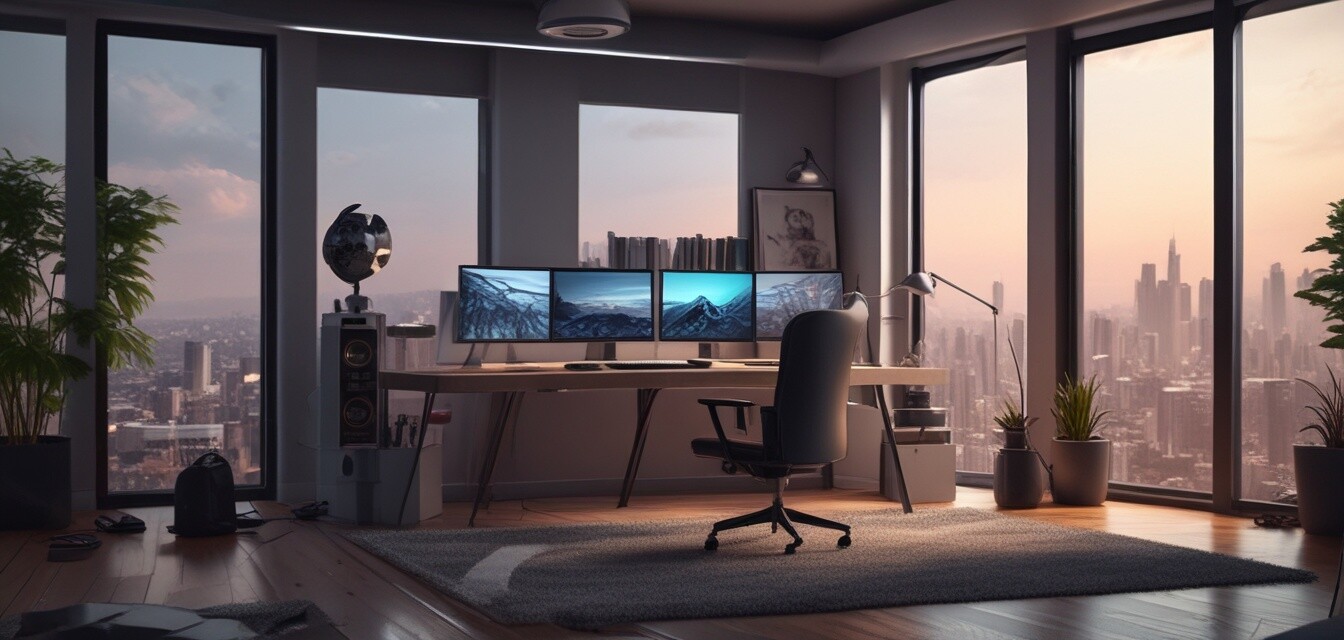
Virtual Reality: The Next Frontier for Remote Work
Key Takeaways
- Virtual reality (VR) is transforming how professionals experience remote work.
- Enhanced collaboration tools in VR can lead to more effective team interactions.
- By integrating VR, companies can redefine their workforce's potential and productivity.
- There are various VR setups that can be optimized for ergonomic comfort.
- Understanding the latest VR trends is crucial for future-proofing remote work environments.
Virtual reality is not just a concept found in gaming and entertainment—it’s rapidly becoming a cornerstone for the evolving landscape of remote work. As we transition into an era where digital interactions dominate, VR technologies are paving the way for more immersive, interactive, and highly productive virtual workspaces.
The evolution of virtual reality in remote work
With advancements in technology, virtual reality has seen significant strides. Early implementations of VR were primarily for entertainment and gaming, but today, innovative applications are being developed for business environments. Here's a brief overview of how VR has transformed the remote work culture:
| Year | VR Development | Impact on Remote Work |
|---|---|---|
| 2010 | Initial VR gaming experiences | Foundation for future VR applications in business |
| 2015 | Release of affordable VR headsets | Increased interest from companies in VR for training |
| 2020 | VR tools for remote collaboration | Enhanced virtual meetings and team interactions |
| 2023 | Integration of VR with productivity software | Streamlined operations within remote teams |
Enhancing team collaboration with virtual reality
Virtual reality isn’t just about immersive experiences; it’s also about collaboration. Many companies are exploring new ways to enhance team interactions through VR meetings. Here are some notable features:
- 3D Virtual Spaces: Teams can meet in customized 3D environments.
- Shared Screens: Easily share and discuss documents in real-time.
- Interactive Tools: Utilize drawing and modeling tools to brainstorm and refine ideas.
- Latency-Free Experiences: Reduced lag time improves communication fluidity.
The role of hardware in VR setups
To effectively utilize VR for remote work, a well-equipped setup is crucial. A typical VR workspace would include:
- VR headset with high resolution
- Multi-monitor setups for additional screen real estate
- Ergonomic accessories to maintain comfort during long hours
- Quality audio equipment for clear communication
Current trends in virtual reality for remote work
As technology continues to advance, several trends are emerging in the realm of VR and remote work:
Tips for businesses adopting VR
- Assess the specific needs of your team before investing in VR technology.
- Provide comprehensive training to ensure everyone is comfortable with the tools.
- Encourage feedback from employees about their experiences with VR tools.
- Stay updated with trends through industry news and expert insights.
Conclusion: The future of remote work with virtual reality
As the landscape of remote work continues to evolve, embracing virtual reality can provide a significant competitive edge. Companies that leverage VR technology not only enhance productivity but also foster a more engaging and innovative work environment. Keep an eye on the latest developments in VR and consider how they could metamorphose your own home office setup!
Pros
- Immersive experiences enhance team collaboration.
- Customizable environments improve adaptability.
- Increased engagement and innovation potential among teams.
Cons
- Requires a significant initial investment in technology.
- Can lead to motion sickness for some users.
- Not all employees may adapt or feel comfortable using VR.
If you’re interested in learning more about enhancing your home office setup with the latest in technology, check out our other categories like computer peripherals or ergonomic accessories.